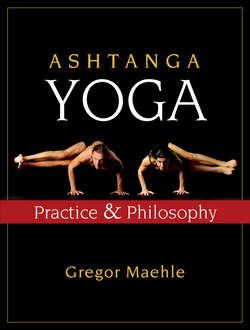Читать книгу Ashtanga Yoga - Gregor Maehle - Страница 14
На сайте Литреса книга снята с продажи.
The Relevance of Ashtanga Yoga Today
ОглавлениеI do not claim here that Vinyasa Yoga is the only form of Patanjali Yoga. That would be absurd. It is, however, one of the authentic representations of Patanjali’s sutra that is still alive.
This system is precious — and relevant — today because it was conceived by the ancient seer Vamana, the author of the Yoga Korunta, especially for householders (grihasta). A householder is somebody who has a job and family, and lives and works in society, as opposed to a monk, hermit, or ascetic (sannyasi). Some forms of yoga are designed for hermits who have no social responsibility and therefore can be engaged with meditation techniques all day long.
Being a hermit or ascetic, however, was never a requirement for yoga. As the Bhagavad Gita explains, “One who outwardly performs his social duties but inwardly stays free is a yogi.”3 If everybody ceased performing their social responsibilities, the text continues,4 this world would be ruined, for obvious reasons. So we need not be disturbed if responsibility for others keeps us from devoting more time to our practice, since fulfilling one’s duty is practice. But what is important is how we practice. How do we spend the precious time we can allocate to practicing?
When T. Krishnamacharya had completed his training, his master, R. Brahmachary, proposed to him that he should get married, have a family, and teach yoga to city dwellers. This came as a surprise to the younger man: being so highly trained, he could have become a great scholar or the abbot of a monastery. But as a teacher of yoga to city dwellers he would have very low social status.
Brahmachary told Krishnamacharya to study the Yoga Korunta, as he knew this would equip him best for teaching householders. The Vinyasa Yoga described in that text was the ideal form of Patanjali Yoga for householders, since it required only around two hours of practice per day.
